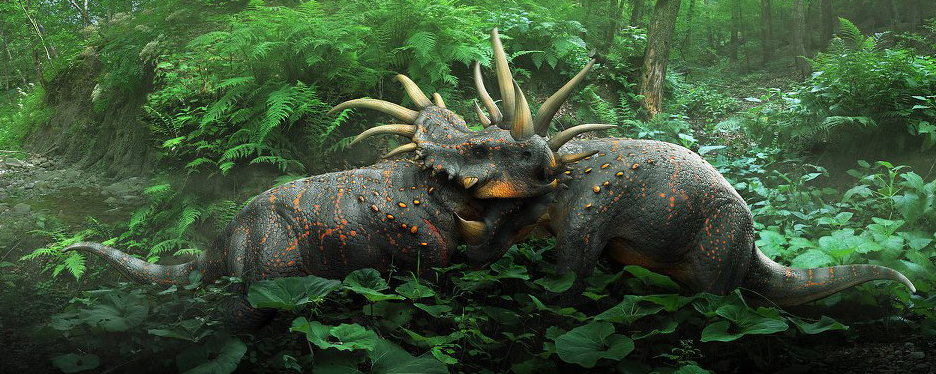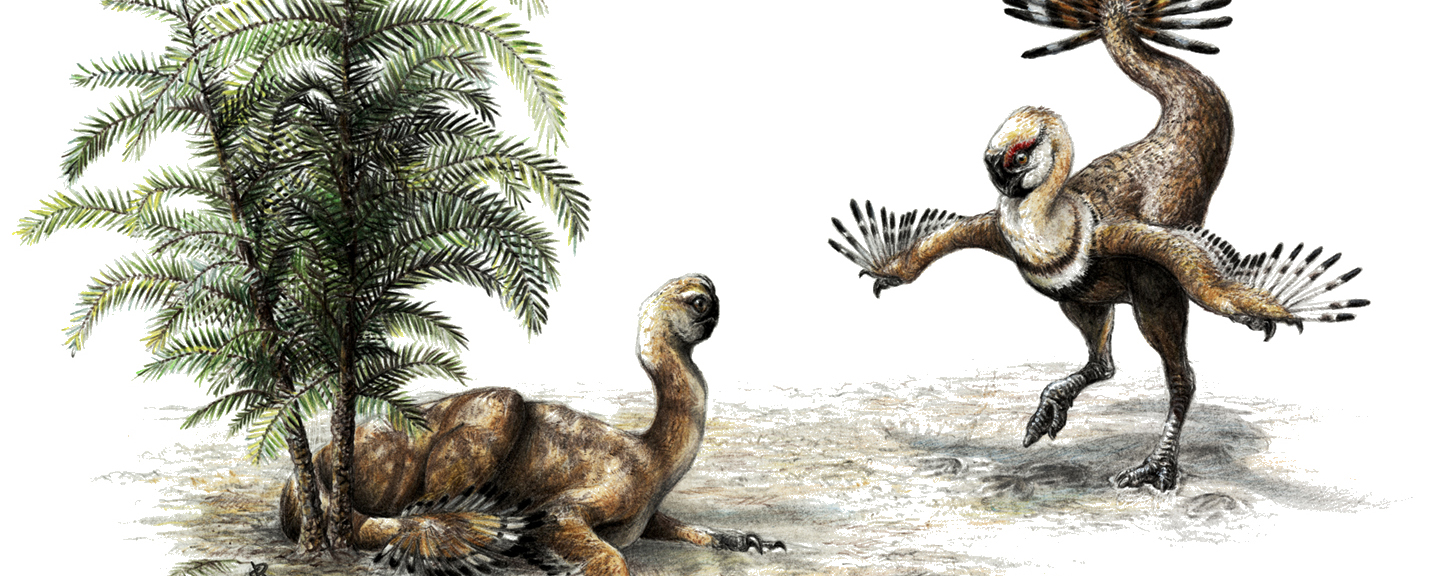


Key Points:
•A variety of observations can be made to interpret the social behavior of extinct animals.
•Gregariousness (dwelling in groups) is best inferred by discovering monospecific bonebeds with individuals of different ages.
•Kin selection and reciprocal altruism are two driving forces that can select for cooperative behavior among gregarious species.
•Although sexual dimorphisim is quite likely for non-avian dinosaurs, demonstrating it turns out to be statistically difficult.
We have examined biomechanics to some degree last lecture. Let's take a look at other forms of behavior and behavioral inferences.
Some behaviors to consider:
Important to consider the difference between intraspecific and interspecific displays:
Some examples of various displays:
What role does display have? In the case of defensive and territorial displays, they can be a non-lethal means of getting a point across. Many animals might growl, hiss, spit, rattle, etc. and a would-be attacker leaves them alone: this is beneficial to both the defender and the attacker. In the case of sexual displays, this can be a means of assessing potential fitness of a mate without having to mate with them first.
There is evidence that at least some non-avian dinosaurs lived in groups (herds, flocks, whatever): that is, they were gregarious. Evidence for group living: best evidence are bone beds mostly containing fossils of multiple individuals of different ages of a single species buried at the same time. This would suggest that the died together, and thus very likely lived together.
This gives the advantage of protection (more eyes to spot predators; larger group may scare off some predators; etc.) and (for carnivores) ability to attack as a group (may allow for strategies that a single hunter couldn't use). However, it means that more mouths feeding from the same food sources (since each species is ultimately its own biggest competitor). Different closely related species today might have very different strategies: e.g., lions are social group hunters, while tigers and leopards are mostly loners.
So why (and when) would natural selection favor living together cooperatively, if individuals of the same species are in competition for the same resources? Two main reasons that--in some circumstances--cooperative group living might be favored:
Sexual strategies: male and female animals have different priorities in terms of reproduction. Males can in principle fertilize many many individuals, while females typically have fewer sex cells (eggs) available at any given time. With less cells to use, females often are "choosier" in terms of mates. So many species evolve displays in which males somehow "show off" (in terms of physical features, ritual motions, combat between rivals, etc.) and females evaluate the display.
For example:
Sexual Dimorphism: when the two sexes (at least as adults) have distinctive forms. Difficulty in testing this in the fossil record:
In very rare cases the eggs have been found inside a dinosaur, which rather unambiguously shows them to be female. Otherwise, there can be circumstantial evidence. For instance, if the species has crests, horns, etc., and these are some rarer showier crests, these might more likely be male.
Ontogenetic changes: Some differences between males and females are present at birth, but others only appear when they become fertile. This is one of several aspects of ontogenetic change.
Given the great size difference between adults and babies, the behaviors and ecology of hatchling and young dinosaurs would be radically different than adults. This is partially reflected in display features like lambeosaurine crests and pachycephalosaurid domes: absent in young individuals, only appearing later in life.
Given enough of an ontogenetic series, there some cases where paleontologists can evaluate the changes in form through the life history of a species. For example, in Triceratops the brow horns are curved upwards in youth (perhaps more for protection?) and forward in adults (for intraspecific combat?). Similarly, tyrannosaurs like Tarbosaurus and Tyrannosaurus would be small cursorial predators hunting small animals as babies, but giant apex predators as adults:
To Next Lecture.
To Previous Lecture.
To Lecture Schedule.
